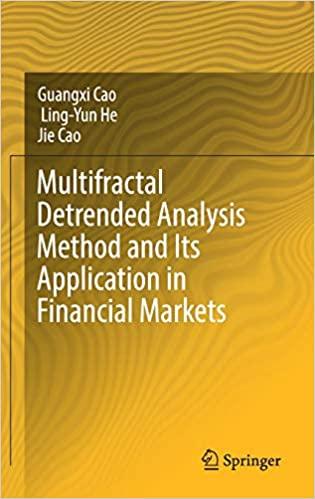Question
I need help with matlab! I am not the best at it and need a guide to make sure I am on the right path!
I need help with matlab! I am not the best at it and need a guide to make sure I am on the right path! The code provided is the code being used as the file in the picture
Code:
tau = 10*(90e-6); % Signal Duration / Pulse Width
CarFrq = 2000e3; % Carrier/Center Frequency
Pave = 2.37; % Average LFM Signal Power
Fsamp = 20*CarFrq; % Sample Frequency
Tsamp=1/Fsamp; % Sample Time / Spacing
t = 0:Tsamp:tau-Tsamp; % Time Vector
% Create an LFM signal with Pave
pcr = 190; % Pulse Compression Ratio
flow = CarFrq-((1/tau)/2)*pcr; % Lower LFM Freq
fup = CarFrq+((1/tau)/2)*pcr; % Upper LFM Freq
coeff1 = (fup-flow)/(2*(tau-Tsamp));
coeff2 = flow;
LFMsig = sqrt(2*Pave)*cos(2*pi*(coeff1*t.^2 + coeff2*t));
PestTime = var(LFMsig)+mean(LFMsig)^2; % Estimated Power (Time Domain)
% Generate and Plot LFM Signal and PSD
figure
subplot(2,1,1) % Time Domain Waveform
plot(t,LFMsig,'linewidth',1.3)
grid
title('Time Domain Response of LFM Signal')
xlabel ('Time (Sec)')
ylabel ('Amplitude')
subplot(2,1,2) % Spectral PSD
delf = 1/tau; % Freq Sample Spacing
fplot=0:delf:Fsamp/2; % Freq scale - 0 to Fs/2
fplot(length(fplot))=[];
LFMspec = fft(LFMsig)/length(LFMsig); % FFT of LFM Signal
MaxSpec = max(abs(LFMspec));
NormSpec = LFMspec(1:length(fplot))/MaxSpec; % Normalize FFT
PestFreq = sum(abs(LFMspec).^2); % Estimated Power (Freq Domain)
% Plot Norm PSD (Pos Freqs ONLY)
plot(fplot,10*log10(abs(NormSpec).^2),'linewidth',1.5);
set(gca,'YLim',[-20 1])
grid
title('Normalized PSD of LFM Signal')
xlabel ('Frequency (Hz)')
ylabel ('PSD ... |Fourier|^2')

Step by Step Solution
There are 3 Steps involved in it
Step: 1

Get Instant Access to Expert-Tailored Solutions
See step-by-step solutions with expert insights and AI powered tools for academic success
Step: 2

Step: 3

Ace Your Homework with AI
Get the answers you need in no time with our AI-driven, step-by-step assistance
Get Started


